#Kondō Isami
Text
1868- Kondō Isami beheaded.
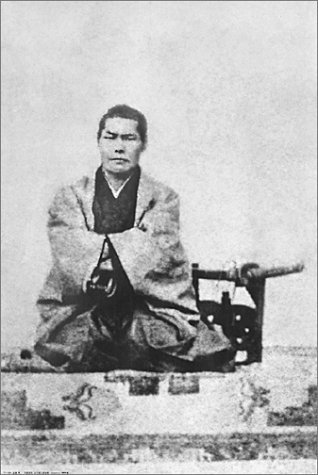
Kondō Isami (近藤 勇, November 9, 1834 – May 17, 1868) was a Japanese swordsman and official of the late Edo period. He was the fourth generation master of Tennen Rishin-ryū and was famed for his role as commander of the Shinsengumi.
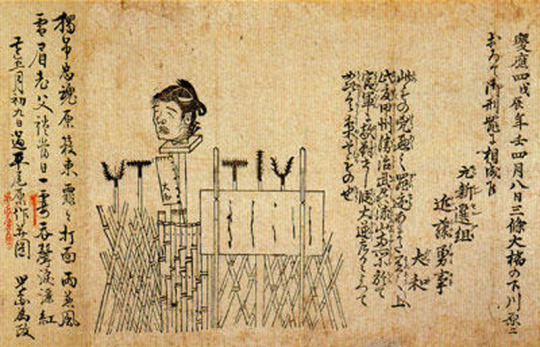
Kondō was put on trial on April 30, 1868 and declared guilty. As a result, Kondō was beheaded by the executioner Yokokura Kisoji at the Itabashi execution grounds on May 17, 1868.[28] Among the crowd witnessing his execution was his nephew Miyagawa Yūgorō. Kondō's head was put on a pike for public display.
1 note
·
View note
Text
Nagakura Shinpachi's letter to Sato Hikogoro in 1891




[Full-sized image]
Translation
Dear Sir,
I understand the details of your letter.
As I am about to leave for my hometown, I have a letter from Matsumoto-sensei for you, but I will not be able to see you for a while. As requested, I will send you the letter from him.
Tomorrow on the 27th, I will pass through Kyoto and Osaka to visit the temples. I will inquire about Kondo-sensei's head and the graves of comrades, and I will go to Taniai and Miyagawa to make inquiries.
I would also like to ask for your kind cooperation. I hope you will make every effort to collect all the information you can by the end of July, and I will return to Tokyo in late April to see you.
I offer my deepest sympathies to you.
March 26
Signed, Sugimura Yoshie [T/N: Nagakura Shinpachi’s alternate name]
Sato Toshimasa-san [T/N: Sato Hikogoro’s alternate name]
Please take care of yourself at this time and in the meantime, I would like to extend my best wishes to the Miyagawa, Kasuya, and Hijikata families and, last but not least, to your family.
Original Text
拝啓陳ぶれば御書翰
の趣き巨細承知仕り候
小生義御地へ罷り出ずるに付き
松本先生より貴殿ヘ
一書を呈し候らえども仰せに任せ
暫時見合わせ候間
右松本先生御手紙
差し送らせ御落手
下さるべく候時に明廿七日
京大坂へまかり越し候寺々
近藤先生首級は尋ね
取り調べ申すべし同志墓も
取り調べ参り候谷合宮川
へ小生より別段申さず候
猶亦宜敷く願い上げたてまつり候
精々七月頃迄に是非とも
御取り集め御尽力
願い上げ奉り候いづれ四月下旬
には帰京余は拝眉を得
万申し述ぶべく候也
三月廿六日
杉村義衛拝印
佐藤俊正様
貴下
尚々時候如何御大切
願い申し候御序での砌宮川
粕谷土方へも宜敷く
且つ末ながら御家内中様
へ宜敷く願い上げ奉り候
Information
Addressed to: Sato Toshimasa (Hikogoro)
Date of creation: March 26, 1891
Dimensions: 14cm x 58cm
Current location: Sato Hikogoro Shinsengumi Museum
Commentary
It’s written that he plans to go to Kyoto tomorrow to search for the burial place of Kondo Isami's head and the graves of his comrades. Since the fall of 1890, Nagakura had been scrambling to raise funds from related people for the 23rd anniversary of the deaths of Kondo Isami and Hijikata Toshizo, and to repair the memorial tombs of Shinsengumi members (currently located in front of JR Itabashi Station).
Wikipedia:
In 1868, Kondo Isami, leader of the Shinsengumi, was jailed for twenty days at Itabashi, and beheaded at the execution grounds. A memorial to him stands at the east (Takino-gawa) exit of Itabashi Station. On the right side are engraved the names of forty Shinsengumi people who died in war, and on the left, the names of 64 who died of disease, seppuku, or other causes. To the left of the memorial is a Buddha statue dedicated to people who died without relatives to care for their graves, and to the right, the graves of Kondō and Nagakura Shinpachi, who is said to have erected the memorial. There is also a stone for Hijikata Toshizō, who died in battle at Goryōkaku.
pandanotabi:
The memorial was built by Nagakura Shinpachi, who we have largely to thank for writing detailed memoirs and accounts of the Shinsengumi and their actions, in 1876. Although some have named this as the Shinsengumi Grave, this is incorrect. Despite the fact that Kondou Isami met his end in Itabashi, he is not buried here. His head was sent to Kyoto and his body to Mitaka.
The only actual grave that is located inside the memorial grounds is that of Nagakura Shinpachi.
To the left you can see a stone tablet honoring Kondou Isami, as well as the grave of Nagakura Shinpachi himself. At the center is a monument dedicated to both Kondou Isami and Hijikata Toshizou.




To the right is a large stone tablet engraved with more than 100 names of Shinsengumi men who had died in the years leading up to and immediately following the Meiji Restoration in the Boshin Wars. The very first two names are Kondou Isami and Hijikata Toshizou.

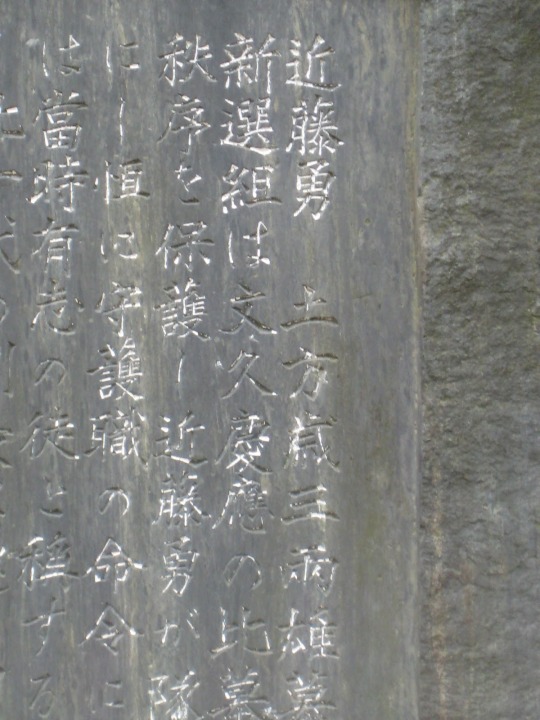
Although the memorial is well-kept and clean, it’s not well-marked. All of the locals however seem to know where it is, so if you ask you’re sure to be able to find it. There are no English explanations, and the place is not very big, but it does have a certain atmosphere appropriate for a memorial site. I would recommend going only if you’re a diehard fan of the Shinsengumi though (like me).
Located near the East Exit of JR Itabashi Station
25 notes
·
View notes
Photo
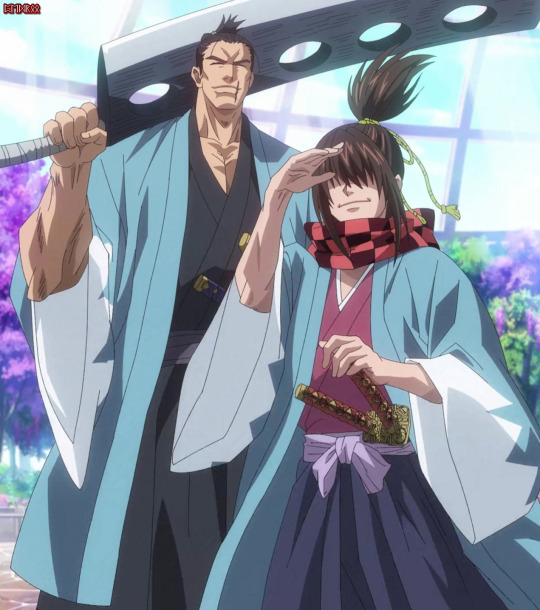
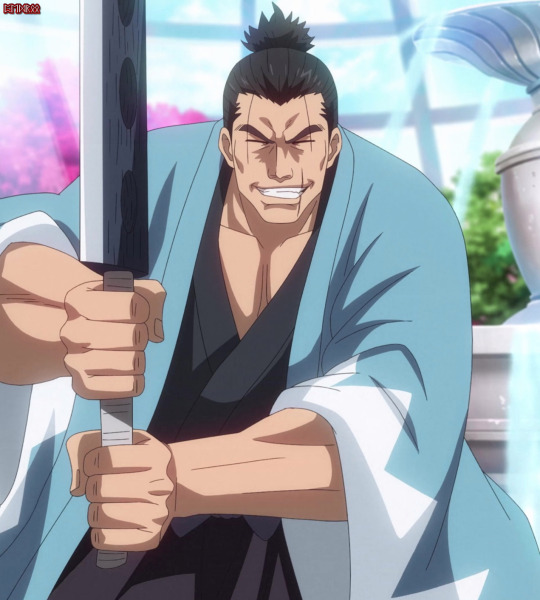

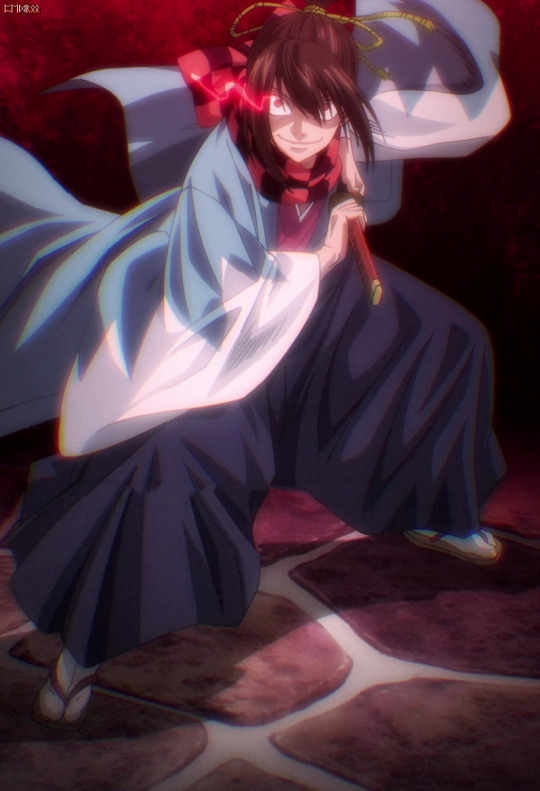
Sōji Okita y Isami Kondō (Eps 17 y 18)
22 notes
·
View notes
Text
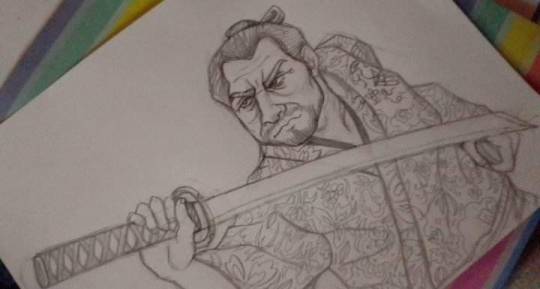
Kondō Isami, My beloved
3 notes
·
View notes
Text

L'anime televisivo The Blue Wolves of Mibu svela il cast, le immagini dei personaggi e la première dell'autunno 2024
Tomokazu Sugita interpreta Kondō Isami.
Info:--> https://www.gonagaiworld.com/lanime-televisivo-the-blue-wolves-of-mibu-svela-il-cast-le-immagini-e-la-premiere-dellautunno-2024/?feed_id=417431&_unique_id=6584ad8e4ace0
#Anime #MahoFilm #TheBlueWolvesofMibu #青のミブロ
0 notes
Quote
"El destino me da igual, si el..." - Ichibanboshi (Isami Kondō) (Bucchigire!)
http://freakuot.es/bbu
0 notes
Text
Me as a person with a daddy kink:
Why can’t we romance Kondou
7 notes
·
View notes
Photo
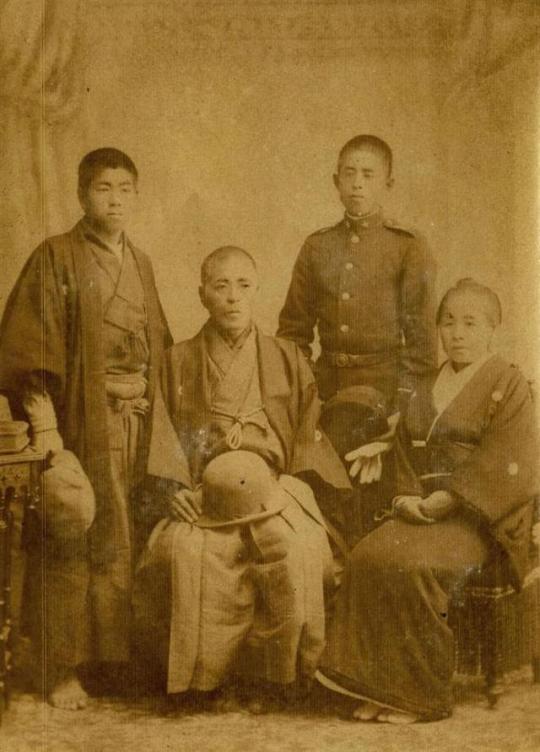
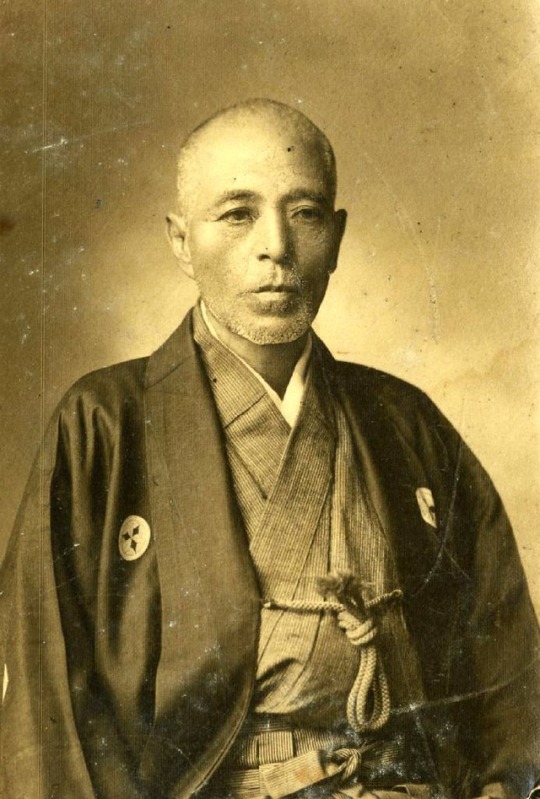



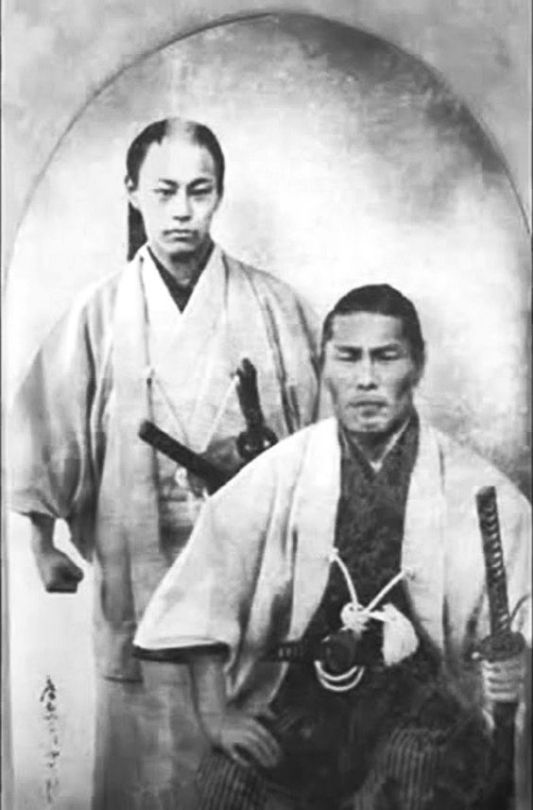

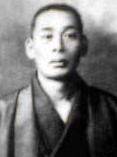
1 & 2 Hajime Saito with his familly - Hajime Saito
3-Kawakami Gensai
4- Okita Sōji - 5 Kondō Isami
6- Okita Sōji and Kondō Isami
7- Hijikata Toshizō
8- Sanosuke Harada
If you like manga/anime/japanesegames ,,,, You’ll Probably Know who these men were.....
#Hajime Saito#Kawakami Gensai#Okita Sōji#Kondō Isami#Hijikata Toshizō#Sanosuke Harada#shinsengumi#rurouni kenshin#hakuōki#manga#anime#otome game#japan history#tokugaba#boshin war#bakumatsu#real shinsengumi#real manga anime men
112 notes
·
View notes
Text
🌸Hakuouki: Fantasy of the Shinsengumi Discord RP Server 👺
Join Link: 🌸 https://discord.gg/sUDe5HjyBr 🌸
🌸 Step into the fascinating world of Hakuouki in our Discord RP Server! Experience the struggles of the Shinsengumi, with the flair of the fantastic running alongside in this Historical fantasy🌸
🦊 Edo Period Japan, Kyoto 🌸 Otome, Samurai, Yokai + Oni 👹
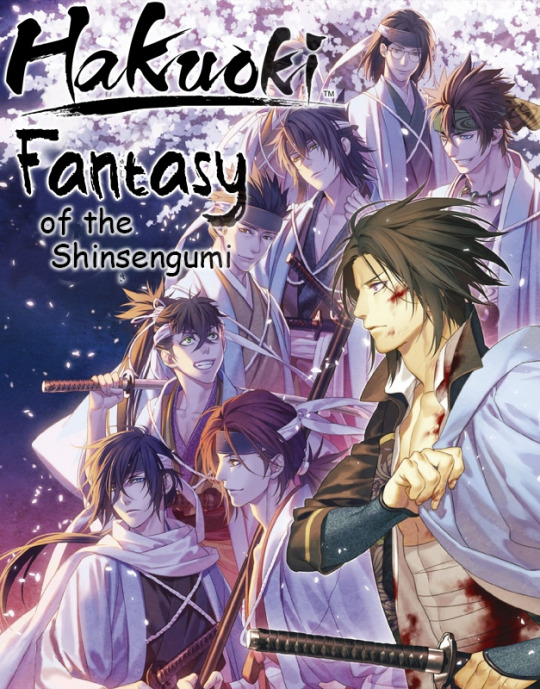
🌸Nerd out over Japanese history, myth and fearless (hot) Samurai boys
👹 Play one of our carefully built yokai races, designed to enrich the world and our story! 👺
🌸Roleplay alongside the Shinsengumi during their struggles!
🌸Play a canon character, or create someone of your own!
🌸Options for all, 1x1 & group roleplay available all fit nicely into a steady narrative! (Ocs Encouraged!)
🌸Based on IF's Hakuouki series and storyline <------
Come, join us with our best boys during the Bakumatsu Era (the ending of the Edo Period) Japan. Meet people who share similar passions and interests, but with unique views that might just teach you something new!
Looking for passionate, quality writers to join our team!
- Recruiting for CCs: Sanan Keisuke, Kondō Isami, Harada Sanosuke, Shiranui Kyo, Iba Hachirō, Sakamoto Ryōma & more!

🌸 Come on and drop in, we're a small friendly group looking to expand and make new friends. We don't bite, but we can be a little zany or sassy!
Join Link: 🌸 https://discord.gg/sUDe5HjyBr
#sanan keisuke#saito hajime#okita souji#souji okita#hijikata toshizo#nagakura shinpachi#yamazaki#yamazaki susumu#souma kazue#toudou heisuke#yukimura chizuru#chizuru#visual novel#otome#hakuouki shinsengumi kitan#hakuoki shinsengumi kitan#Discord rp#hakumyu#literate rp#rp promo
7 notes
·
View notes
Text
Impostors Take Over in Shine On! Bakumatsu Boys TV Anime Trailer
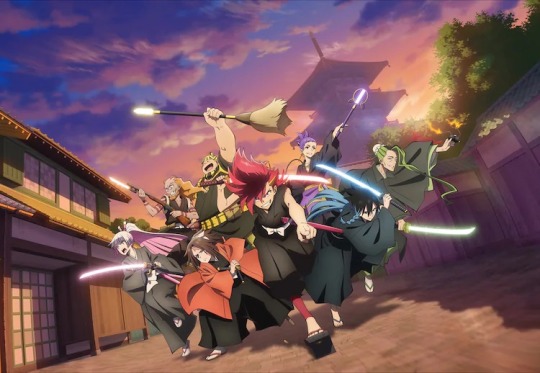
It's time to get wild, because a new key visual (above), a new preview video (below), and the main cast have all been revealed for Shine On! Bakumatsu Boys (known in Japan as Bucchigire!), an upcoming original TV anime that explores a world where the Shinsengumi police squad is replaced a group of ne'er-do-wells that are forced to assume the identities of those charged with protecting the mean streets of Kyoto.
The main cast for the series includes:

Gen Satō as Ichibanboshi, the replacement for Kondō Isami.
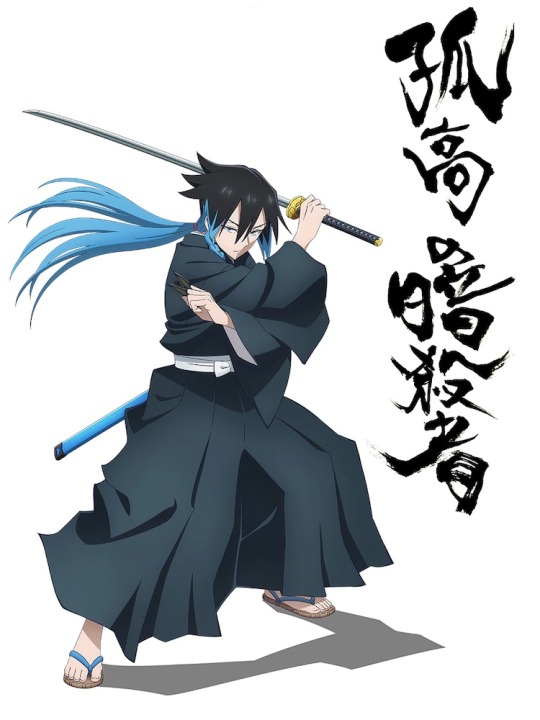
Shun'ichi Toki as Sakuya, the replacement for Hijikata Toshizō.

Toshiyuki Toyonaga as Tōdō Heisuke, the sole surviving member of the Shinsengumi.
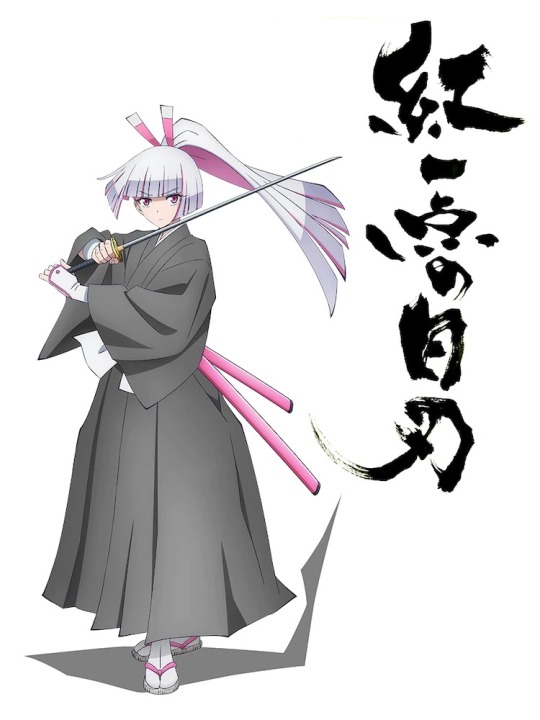
Sumire Uesaka as Akira, the replacement for Okita Sōji.
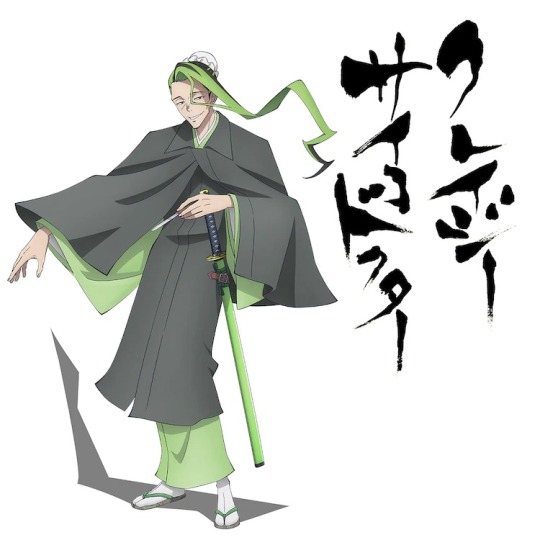
Shin-ichiro Mik as Sogen, the replacement for Yamanami Keisuke.

Yūto Uemura as Suzuran, the replacement for Saitō Hajime.

Wataru Takagi as Gyataro, the replacement for Nagakura Shinpachi.
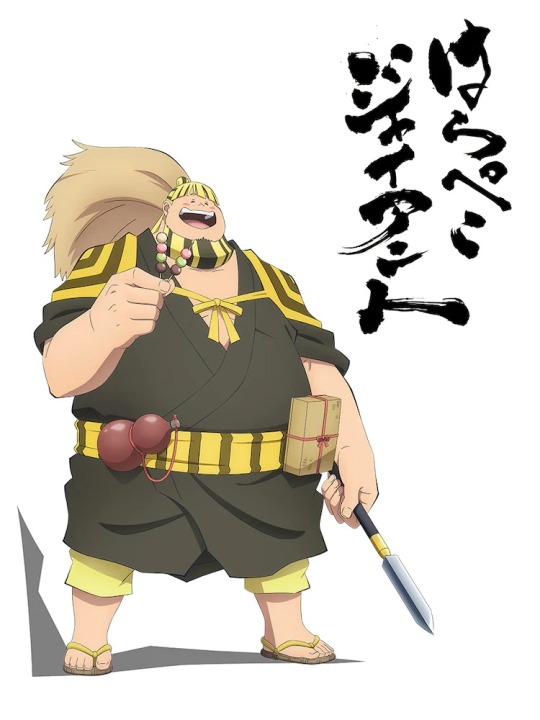
And Fukushi Ochiai as Bo, the replacement for Harada Sanosuke.
youtube
RELATED: Original TV Anime Shine On! Bakumatsu Boys Releases New Teaser Trailer & Visual
Set during the Bakumatsu Period, Shine On! Bakumatsu Boys follows a group of seven condemned criminals who are brought in to act as "doubles" when the original Shinsengumi secret police force is wiped out by an unknown assailant, leaving only a single survivor. Can this ragtag band of rogues keep Kyoto safe?

Shine On! Bakumatsu Boys is directed by Tetsuo Hirakawa and features animation production by Geno Studio. The series is scheduled to broadcast in Japan on TOKYO MX on Fridays during the 22:30 time slot (10:30pm JST) and on BS11 on Fridays during the 23:30 time slot (11:30pm JST) beginning on July 08, 2022.
Source: Comic Natalie
Copyright notice: © 2022 "Shine On! Bakumatsu Boys" Production Committee

---
Paul Chapman is the host of The Greatest Movie EVER! Podcast and GME! Anime Fun Time.
By: Paul Chapman
6 notes
·
View notes
Text
GK Fanbook official timeline
In June I translated the official timeline that was on the GK main site... and that Tumblr somehow hates as it refuses to appear in the tags.
I’m glad to update the info that were in that timeline with the new timeline Noda made for the fanbook, which is definitely a must have so I recommend everyone to buy it!
I might add to it pictures later on. I’m sad to say though it’s not yet a complete timeline as some facts are missing but whatever, it’s a lot more informative than the previous and this will give me the chance to release a more complete one as soon as I’ll have time to add all the datas that are missing.
In the meantime, please enjoy it!
(Also, if you catch mistakes please warn me...)
GOLDEN KAMUY BACKGROUND
Augmented revised edition.
This is a chronological table reconstructed by adding to "Golden Kamuy BACKGROUND" released on the official website the events and historical facts found so far.
1835 May (31): Hijikata Toshizō is born in the Musashi Province.
1839 May (23): Nagakura Shinpachi is born in the Musashi Province.
1853 July: Perry Expedition.
1854 March: The Convention of Kanagawa is concluded.
1858 July: The Treaty of Amity and Commerce is signed.
1858 September: Ansei purge.
1859 March (circa): Hijikata Toshizō is officially enrolled at the Tennen Rishin-ryū’s Shieikan dōjō.
1860 March: Sakuradamon Incident.
1862 September: Namamugi incident.
1863 (circa): Nagakura Shinpachi becomes a guest at the Shieikan dōjō.
1863 March: The Rōshigumi is organized. Hijikata Toshizō and Nagakura Shinpachi are assigned to the third corp.
1863 April: The Rōshigumi splits. Serizawa Kamo, Kondō Isami and others organize the Mibu Rōshigumi. Hijikata Toshizō and Nagakura Shinpachi join the Kondō faction.
1863 May: The bombardment by the Chōshū Domain of a foreign ship affair.
1863 August: Anglo-Satsuma War.
1863 August (circa): Political change on August 18. The Rōshigumi is honored for its achievements in this period and renamed “Shinsengumi”.
1863 September (circa): Hijikata Toshizō becomes the Vice-Commander of the Shinsengumi. As the right arm of Kondō Isami, who became the director, he maintains security in Kyoto.
- Yōichirō the manslayer and Hijikata Toshizō met in Kyōto.
1864 July: The Ikedaya incident occurs. Kondō Isami, Nagakura Shinpachi and others attacks the men of Chōshū and Tosa Domains of the Sonno Jōi faction. Hijikata Toshizō secured the entrance and exit around Ikedaya and protected the credit of the Shinsengumi.
1864 August: Kinmon incident (Crimson gate incident).
1864 August: The bombardment by a fleet of 4 nations at Shimonoseki affair.
1864 December: First Chōshū expedition.
1866 March: Satchō Alliance.
1866 July: Second Chōshū expedition.
1866: Western-style horse racing is held in Negishi.
1866: Kiroranke is born in the Amur river basin.
1867 November: Restoration of imperial rule.
1868 January: Great Order of the Restoration of the Royal Government.
1868 January: The Boshin War begins starting with the battle between Toba and Fushimi.
1868 March: Nagakura Shinpachi meets Kondō Isami, who had been defeated in the Battle of Kōshū-Katsunuma, and splits with the Shinsengumi.
1868 April: The Charter Oath.
1868 May: Bloodless opening of Edo Castle. Kondō Isami, who was captured by the new government army, is executed
- Clog skating, commonly known as "gerori", spreads explosively in Ezo in the latter half of the Edo period.
1868 June: Battle of Aizu.
1868 October: Edo is called Tōkyō, the Meiji era starts.
1868 December: The Battle of Hakodate (Boshin War - Battle of Goryokaku). Hijikata Toshizō fights with Murahashi Hisanari, the commander of the new government army. In this war, Inudō Shirosuke's older brother served in the new government army. He died in battle.
1869 May: Battle of Miyako Bay. Hijikata Toshizō, on the warship Kaiten, launches a naval boarding attack (French: Abordage) on the new government warship, Kotetsu.
1869 May: Hijikata Toshizō is captured by the new government army and is treated as a prisoner of war.
1869 May: Takeaki Enomoto, President of the Republic of Ezo, surrenders. As a result, the Battle of Hakodate ends with the victory of the new government army, and the Boshin War ends.
1869 July: Returning the land to the emperor implementation.
1869 August: “Ezo” is renamed “Hokkaidō”. Around this time, "Hakodate" began to change to "Hakodate" notation.
1871 August: Implementation of the abolition of the han system.
1872: The “Solar Calendar”, or Gregorian Calendar is adopted the day following December 2, Meiji 5, which becomes January 1, Meiji 6 (regulated as January 1, 1873 in the Gregorian calendar).
1873 January: Military conscription issued by the Ministry of Army.
1873 February: The ban on Christian faith was lifted.
1873: Birth of Heinojō, Koito Otonoshin’s older brother.
1874: Military settler colonists system is established. It is implemented from the following year.
1875 August: The Treaty of Saint Petersburg with the Russian empire is concluded. It’s established that South Sakhalin is the new borderline with the Japanese territory.
1876 March: Promulgation of the Sword Abolishment Edict.
Murawashi Hisanari, a pioneer government official, is involved in the establishment of a brewery (later Sapporo Breweries).
1877 February: Satsuma Rebellion.
1877 (circa): Roller skates are introduced to Japan.
1879 From February to March 1879: Abnormal weather occurred in winter leading to mass death of Ezo deer due to heavy snow, storms and cold.
- Hokkaido wolves are in danger of extinction due to low deer prey.
1881 March: Emperor Alexander II is assassinated by Kiroranke and Wilk.
1881 September: Kabato prisoner’s accommodation facility (later Kabato Prison) opened. Hijikata is also imprisoned in this prison.
1882: Nagakura Shinpachi becomes a swordsman instructor at Kabato prison and starts instructing guards.
1882: Military settler colonists uses cannons to converge locust plague.
1886 January: The Hokkaidō Government Office is established.
1886: Nagakura Shinpachi retires from his role of kenjutsu teacher in Kabato prison.
1886: Koito Otonoshi’s birth.
1888: Sakamoto Keiichirō, the lightning bandit, is imprisoned by Kabato prison.
1888 May: Forming of the First Division of the Imperial Japanese Army.
1889: Is this the last confirmed sighting of an Ezo wolf?
1889 February: The Imperial Japanese Constitution is proclaimed.
1890 March: Abashiri public prison office (later Abashiri Prison) opened.
1890 November: The Imperial Japanese Constitution is in force.
1890 (circa): Most of the Hokkaido wolves are said to have been exterminated and allegedly extinct.
1891: An albino bear cub is captured in the Soya region and raised by the Ueno Zoo.
1891 (and after): Wilk, Kiroranke and Sofia go to Hasegawa Photo Studio to learn Japanese.
- Wilk and Kiroranke walk on the ice field to Sakhalin, Sophia remains in Russia. After this, Wilk travels to Hokkaido and meets Inkamat.
1892: Opening of mining in the Yubari Coal Mine.
1892: Hijikata’s favorite gun, the “Winchester model M1892”, is designed and manufactured.
1893: Tsurumi’s favorite gun, the “Borchardt pistol”, is designed and manufactured.
1893 (circa): Shiraishi Yoshitake makes a plan to escape from the child prison.
1894 (circa): Tsukishima Hajime joins the 2nd Division in Shibata, Niigata Prefecture.
1894 July: Sino-Japanese war.
1894 September: The flagship Matsushima was wrecked in the Battle of the Yalu River on the 17th. At this time, Koito Heinojō, who was on board the ship, was killed in action.
- The only son of Nihei Tetsuzō died in the Sino-Japanese War.
1895 March: End of the Sino-Japanese war.
- Around the end of the Sino-Japanese War, “Igogusa”-chan’s letters to Tsukishima interrupt.
1895 April: Signing of the treaty of Shimonoseki (Sino-Japanese Treaty).
1895 (and after): Sakamoto Keiichirō escapes from Kabato prison during outside labor. After this, he has a fateful encounter with O-gin.
- Nihei Tetsuzō go hunting with Kirawus. It’s in this circumstance, he is told why Nihei favors the Murata rifle.
1896 May: Forming of the 7th Division of the Imperial Japanese Army with military settler colonists.
1896: The last Ezo Wolf fur export trade was done by the Hakodate fur trader, Matsushita Kumatsuki.
1896: The Sulfur mining by Abashiri Prison prisoners is stopped.
1896: The mine on Mt. Io between Lake Mashu and Lake Kussharo is closes.
1896: Tsurumi meets Tsukishima Hajime in prison.
1897: Record for that annual herring catch which is of 975,000 tons.
1897 (and after): Shiraishi Yoshitake, after being imprisoned at Kabato Prison goes around prisons all over the country and gained the nickname of "Jailbreak King".
1898: Gold is discovered in the Esashi basin. The dawn of the Hokkaido version of the gold rush.
1899: Sugimoto Saichi’s father died of tuberculosis and he leaves his home.
1900: Koito Otonoshin and Tsurumi Tokushirō meet.
- Hijikata Toshizō, who has been imprisoned by Kabato Prison for about 20 years, reunites with Nagakura Shinpachi. After that, Hijikata is transferred to Abashiri Prison.
1902 January: Anglo-Japanese Alliance.
1902: Seven Ainu who were transferring gold are killed by someone in Tomakomai. Among the victims there was Ariko Rikimatsu’s father.
- A fleeing Wilk is arrested at Lake Shikotsu. When imprisoned in Abashiri Prison, he carved the gold code into the prisoners on the death penalty row.
1902: Koito Otonoshin is kidnapped by suspected Russian criminals. The case reaches a positive resolution thanks to Tsurumi's cooperation. After this, Koito Otonoshin entered the Army Military Academy.
(Late developments of the manga seem to imply this happened prior to the seven Ainu being killed.)
1903 January: Hakkōda Mountains incident. Ariko Rikimatsu joins the search team for distress cases.
(In real life the incident actually took place on 1902 January. Late developments of the manga seem to imply this is true also in the manga.)
1903: Sugimoto Saichi joins the 1st Division of the Imperial Japanese Army.
1903 (circa): Some military settler colonists transfer the tattooed prisoners. At this time, Hijikata Toshizō and others killed the military settler colonists and escaped. Twenty-four tattooed prisoners are unleashed.
(Late developments of the manga claim that the convicts escaped were only 23.)
1904 February 8: Russo-Japanese war.
1904 August: Siege of Port Arthur. The 1st Division to which Sugimoto belongs and the 7th Division to which Tsurumi, Ogata, Tanigaki, Kiroranke and others belong are thrown into battle. Hokkaido 7th Division, Shikoku 11th Division, Kanazawa 9th Division, and Tōkyō 1st Division were the ones that fought at 203 hill.
- Lieutenant Tsurumi sees for the first time in the battle Immortal Sugimoto and is fascinated by him.
- Tanigaki Genjirō meets Sugimoto Saichi, a survivor of the White Sash Brigade.
- Genjiro Tanigaki learns the truth about what happened to his sister and best friend.
- Ogata Hyakunosuke shoots and kills his half brother second lieutenant Hanazawa Yūsaku.
- Lieutenant Tsurumi, gaining total control of it, raised the national flag on the summit of the 203 hill.
- Lieutenant Tsurumi and Sergeant Tsukishima were injured by a shell. Part of Tsurumi’s head is blown away.
- While being transported the injured Lieutenant Tsurumi and Sergeant Tsukishima Passing by Saichi Sugimoto, who carries his childhood friend Toraji
- Saichi Sugimoto takes care of Toraji.
1905 September: The end of the Russo-Japanese War. The Treaty of Portsmouth (Japan-Russia Peace Treaty) with the Russian Empire is concluded.
1905: Noboribetsu is designated as a recreation area for the Russo-Japanese War victims of the 7th division.
- Hijikata Toshizō asks Kiroranke about “Kochōbe Asuko”.
1906: Sugimoto Saichi delivers the remains of Toraji to Umeko.
- Ogata Hyakunosuke kills his father, Lieutenant General Hanazawa. This is passed for a suicide.
1906 September: The first issue of "Shojo Sekai", a magazine that Sugimoto was also reading, will be published.
1906 November: South Manchuria Railway Co., Ltd., a special company of the Empire of Japan, is established.
- Saichi Sugimoto goes to Otaru, Hokkaido in search of gold dust.
1907 February: An immortal man and an Ainu girl meet. The battle for the gold begins.
#Golden Kamuy#Sugimoto Saichi#Ogata Hyakunosuke#Tsurumi Tokushirou#Tsukishima Hajime#Hijikata Toshizou#Nagakura Shinpachi#Sakamoto Keiichirou#O Gin#Shiraishi Yoshitake#Tanigaki Genjirou#Golden Kamuy Timeline#Hanazawa Yuusaku#Hanazawa Koujirou#Asirpa#Wilk#Kiroranke#Sofia
132 notes
·
View notes
Text
About Oishi Kuwajiro (大石鍬次郎)
Ōishi Kuwajirō (大石鍬次郎), lived from Tenpō 9 (天保, 1838) to the 10th day of the 10th month of Meiji 3 (明治, 1870). Shinsengumi member (role of troop inspector) of the Bakumatsu era. Official first name Morichika (守親). From the Genji clan (lineage of Seiwa-Genji Yoshinaka, 清和源氏義仲).
Born in Tenpō 9 (天保, 1838) as eldest son of Ōishi Sutejirō (大石捨次郎) who was a close guard of the renowned Hitotsubashi (一橋) family, one of the three branches of the Tokugawa clans. His initial first name was Kinnosuke (金之助).
Due to a conflict (it is assumed it was about an issue with a women), he left his family and lived with a carpenter from Hino (日野) in Musashi province. This carpenter was an acquaintance of the village head Satō Hikogorō (佐藤彦五郎, 1827-1902) and it was through this connection that Ōishi was able to train at Hikogorō’s fencing dōjō.
Ōishi joined the Shinsengumi when Kondō Isami (近藤勇, 1834-1868) was recruiting in Edo from the 9th to 10th month of Genji 1 (元治, 1864) after the Ikedaya Incident had taken place earlier in the 6th month of that year. As he was mainly carrying out assassinations, he was feared as “Ōishi the Assassin”. Ōishi was practicing the Ono-ha Ittō-ryū (小野派一刀流) of swordsmanship but also studied the Tennen Rishin-ryū (天然理心流) that was followed by Kondō Isami. The Shidankai Sokki Roku (史談会速記録), a Taishō-era (大正, 1912-1926) record of statements from then aging contemporary witnesses, mentions on several occasions Ōishi being an as apt swordsman as the famous Okita Sōji (沖田総司, 1842-1868).
According to the Torishirabe Nikki (取調日記), records of Shinsengumi member Yamazaki Susumu’s (山﨑丞, 1833-1868), Ōishi was a member of the first unit of the Shinsengumi lead by Okita Sōji at least by the 5th month of Keiō 1 (慶応, 1865).
In the 9th month of Keiō 2 (1866), Ōishi was deployed as commander of a unit of ten to a conflict which became known as the Sanjō Seisatsu Incident. When the Shinsengumi became assimilated into the Bakufu troops in the 6th month of Keiō 3 (1867), Ōishi became troop inspector. In the 11th month of that year, Ōishi assassinated Itō Kashitarō (伊東甲子太郎, 1835-1867) in the Aburanokōji Incident. In the 12th month, Ōishi, Saitō Hajime (斎藤一, 1844- 1915) and others were ordered to protect the Kishū samurai Miura Kyūtarō (三浦休太郎, 1829- 1910) in the Tenmaya Incident.
When the Bakufu retreated from the Battle of Toba-Fushimi in the 1st month of Keiō 4 (1868), the Shinsengumi withdrew to Edo where Kondō formed a troop called Kōyō Chinbutai to follow the Bakufu’s order to assist pacifying the Kai province. The troop of which Ōishi was a member was sent to Kai where it was defeated in the 3rd month of that year and disbanded. After that, Ōishi was hiding in Edo with his wife and children but was captured in the 12th month being betrayed by a friend and former Shinsengumi member, Mitsui Ushinosuke (三井丑之助). According to an anecdote, Ōishi, troubled with life, approached former Shinsengumi member Kanō Washio (加納鷲雄, 1839-1902) who had become a member of the government forces under the Itō Faction and begged him to let him go, but without success. However, there is no historic record which would back this anecdote and it’s contradicted by the later testimony of Kanō’s comrade Abe Jūrō (阿部十郎, 1837-1907).
Ōishi was accused of Sakamoto Ryōma’s (坂本龍馬, 1836-1867) assassination in the Ōmiya Incident and confessed even if there had not been a thorough investigation. Later, however, he retracted his confession and said the job was carried out by the Tokugawa special forces Mimawarigumi. In any case, Ōishi was beheaded on the 10th day of the 10th month of Meiji 3 (明治, 1870) (November 3, 1870, in the Western calender) for the assassination of Itō Kashitarō, He was 32 years old at that time.
Due to fear of interrogation, Ōishi’s son and heir Raitarō (雷太郎) changed his name to Honma Utakichi (本間歌吉) and it is said that he later ran a shop for tortoise shell produces in the Inarichō (稲荷町) neighborhood of the Shitaya district of Tōkyō.
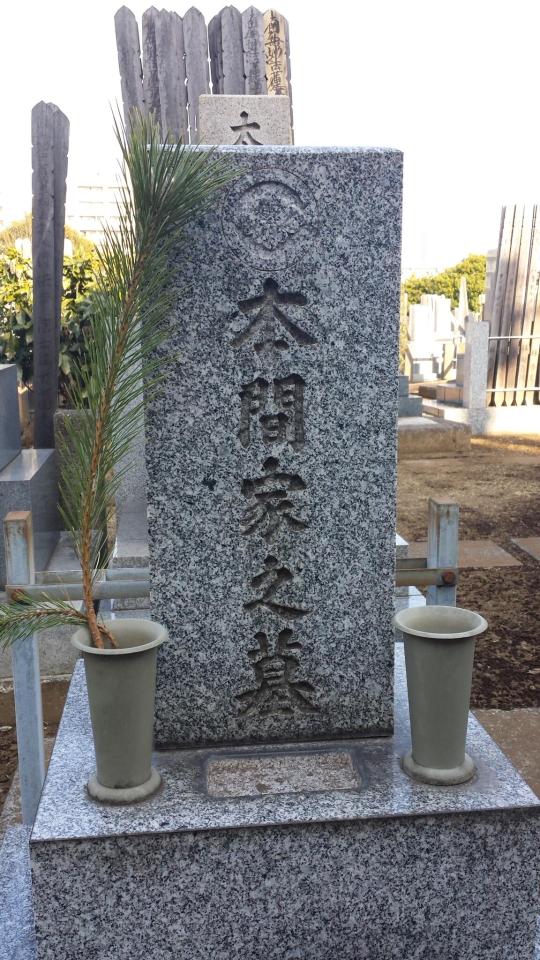
Grave of Oishi Kuwajiro’s son Honma Utakichi. Honma is his maternal maiden name. He used to call himself Oishi, but changed his name after Kuwajiro was decapitated. Possibly... Kuwajiro could be laid to rest here as well. (source: Twitter)
4 notes
·
View notes
Text
🌸Hakuouki: Fantasy of the Shinsengumi Discord RP Server 🦊
Join Link: 🌸 https://discord.gg/sUDe5HjyBr 🌸
🌸 Step into the fascinating world of Hakuouki in our Discord RP Server! Experience the struggles of the Shinsengumi, with the flair of the fantastic running alongside in this Historical fantasy🌸
👺 Edo Period Japan, Kyoto 🌸 Otome, Samurai, Yokai + Oni 👹

🌸Nerd out over Japanese history, myth and fearless (hot) Samurai boys
👹 Play one of our carefully built yokai races, designed to enrich the world and our story! 👺
🌸Roleplay alongside the Shinsengumi during their struggles!
🌸Play a canon character, or create someone of your own!
🌸Options for all, 1x1 & group roleplay available all fit nicely into a steady narrative! (Ocs Encouraged!)
🌸Based on IF's Hakuouki series and storyline <------
Come, join us with our best boys during the Bakumatsu Era (the ending of the Edo Period) Japan. Meet people who share similar passions and interests, but with unique views that might just teach you something new!
Looking for passionate, quality writers to join our team!
- Recruiting for CCs: Sannan Keisuke, Kondō Isami, Harada Sanosuke, Shiranui Kyo, Iba Hachirō, Sakamoto Ryōma & more!

🌸 Come on and drop in, we're a small friendly group looking to expand and make new friends. We don't bite, but we can be a little zany or sassy!
Join Link: 🌸 https://discord.gg/sUDe5HjyBr
#Hakuouki#Hakuoki#roleplay#otome#samurai#rp#shinsengumi#Historical Roleplay#Hakuouki RP#Hakuouki roleplay#Hakuoki roleplay#Hakuoki RP#sanan keisuke#kondo isami#harada sanosuke#shiranui kyo#iba hachiro#sakamoto ryouma#open rp#oc roleplay#saito hajime
5 notes
·
View notes
Text
Academic texts about Shinsengumi: Lee, Rosa (2011)

'Moeyo ken' and its Hijikata character
Reference: Lee, R. (2011). Romanticising Shinsengumi in Contemporary Japan. In: Dr Suter, Rebecca (Ed.), New Voices in Japanese Studies, Vol. 4 (pp. 168-187). The Japan Foundation, Sydney. http://dx.doi.org/10.21159/nv.04.08.
This text claims that the contemporary portrayals of the Shinsengumi in Japanese pop culture mostly stem from the popularity of and/or share similarities with the novel “Moeyo ken” by Shiba Ryōtarō. The author Rosa Lee here on one hand analyzes amazon reviews of the novel, on the other hand compares “Moeyo ken” with “Gintama”.
Since there seems to be no English translation of this novel, I decided to share with you contents of it that are discussed in the paper.
Also, I think this academic text partially explains why Hijikata has the BY FAR longest route in Hakuōki and why he is the focus of the game's marketing.
(Warning: Wordy text)
Locating Popular Imagination of Shinsengumi (pp. 170-72)
“No other text is more appropriate than Moeyo ken to extract the archetype imagination of Shinsengumi in postwar Japan. Firstly, the novel was voted as the best fictional representation of Shinsengumi in a 2003 magazine survey.10 Secondly, perception of Shiba’s Shinsengumi as a close reflection of the actual figures is such widespread that whether or not they decide to follow Shiba, post-Moeyo kenreproducers of Shinsengumi cannot ignore his rendition when formulating their own versions.11 Shiba’s influence must be considered in the context of his reputation as a prominent national writer.12 Being perceived as ‘someone who can accurately communicate the realities of Japanese history rather than…a mere fictionwriter’,13 his characterisation of Shinsengumi transcends fictional boundaries and becomes a reality for many Japanese. In fact, one historian laments many texts place emphasis on Hijikata Toshizō, the vice commander of Shinsengumi, or Okita Sōji, the captain of the first unit, instead of Kondō Isami, the actual head of the organisation, because Shiba’s characterisations of Hijikata and Okita are overwhelmingly popular.14
Taishū bungaku as a Mirror for the Masses’ Philosophies of the Age
To comprehend why Shiba’s heroes are popular, this article will first examine the implications of Moeyo kenas a taishū bungaku. Originating from kōdan or historical romances for commoners, taishū bungaku is rather ambiguously distinguished from junbungaku (pure literature).15 It is argued that the term was initially adopted in the early 1920s to differentiate works from pure literature as well as from the more vulgar fiction.16 Thus labelling a work as taishū bungaku did not necessarily connote that it was non-serious or even commercially popular.17 Nevertheless, the two genres became qualitatively differentiated as authors of junbungaku were considered ‘artists’ in contrast to their ‘artisan’ counterparts.18 This division was further solidified with the creation of separate literary awards for each style.19 However in recent years, postwar economic expansion, development of mass media, writers’ shift from one genre to another and a new generation of writers’, such as Murakami Haruki’s, experiment with postmodernity have further challenged the definition of pure and popular.20
For our purposes, it is sufficient to note that authors of junbungaku wrote more ‘for the sake of other writers’21 and were ‘withdrawn from concerning themselves with political and national affairs’.22 In contrast, taishū bungaku has traditionally been ‘absorbed and reflected by the masses through entertainment’.23 That is, popular literature exists precisely because the masses consider a work entertaining. Form, content and target audience of taishū bungaku have fluctuated across time as authors try to adapt to changes in the readers’ environment and perception. In this respect, readers are indirectly contributing to the creative process as writers attempt to meet the demands of their audience.24 Yet, the authors’ determination to entertain readers continues to be a key characteristic of the genre.25
According to Antonio Gramsci, entertainment in this context denotes more than amusement.26 Entertainment distilled in popular literature is ‘an element of culture’ as it adheres to changes in ‘the times, the cultural climate and personal idiosyncrasies’.27 These elements are produced through a careful calculation to make a novel successful by appealing to the moral and scientific ‘philosophy of the age’: the deeply embedded ‘feelings and conceptions of the world predominant among the “silent” majority’.28 Heroes in popular literature are thus able to attract readers because their narratives reflect the masses’ ideals.
On this basis, it may be possible to locate a ‘philosophy of the age’ by examining how and why readers are attracted to heroes of successful taishū bungaku. This requires a consideration of who constitutes as the ‘silent majority’ in postwar Japan. Postwar taishū bungaku became more sophisticated and diversified as authors began to adopt a more realistic, informative or both styles of writing.29 Concurrently, its readership expanded from the existing readership of female readers and blue-colour workers, to include the emerging middle class, intelligentsia dissatisfied with the status quo and white-collar workers.30
Furthermore, in the age of economic expansion and commercialism of literature, writers of popular literature such as Shiba managed to ‘appeal to some hundred thousands of readers’ by successfully distilling in their works values shared by the masses, or by ‘at least giv[ing] the masses that impression’.31 Readership of taishū bungaku, or at least Shiba’s works, could therefore be described as a large group of people from various backgrounds, connected by their attraction to a work of fiction embodying their values. In other words, the ‘silent majority’ could be considered as a reflection of the Japanese public.32
If the hero in Moeyo ken is our key to deciphering the masses’ consciousness, how do we identify the elements of entertainment distilled in him? This requires a scrutiny of how readers locate their own model heroes and compasses since the entertainment value of a work is ultimately judged by the audience.33 For this purpose, the practice of ‘sequel-writers’ who ‘revive’ and ‘recreate’ heroes of successful popular fiction with ‘new material’ is noteworthy since modifications are made to accommodate changing social sentiments.34 We may therefore discover why the masses are drawn to Shinsengumi by comparing Shiba’s heroes in Moeyo ken, the prototype of contemporary representations of Shinsengumi, with its reproductions. In turn, this could elucidate the underlying reason for popular romanticisation of Shinsengumi in contemporary Japan.”
Scope of Study
This section is about Lee’s methodology in her study. She notes here:
“(...) [A] caveat must be imposed that in examining representations of Shinsengumi in Moeyo ken and Gintama, this article will consider the authors’ renditions of Hijikata Toshizō as reflecting the public’s perception of Shinsengumi as a whole. Not only is Hijikata the main protagonist of Moeyo ken and a major supporting character in Gintama, he also appears to be popularly appreciated as the epitome of Shinsengumi, the embodiment of its values and virtues. As noted previously, most Shinsengumi-related texts are focused on Hijikata, even though he is only the vice commander. The public’s adoration of Hijikata is also reflected in NHK’s broadcasting of Shinsengumi!! The Last Day of Hijikata Toshizōas a sequel to the taiga dorama (grand fleuve drama), ‘Shinsengumi!’.40 As a particular genre of historical narrative that ‘encourages and integrates present Japan by remembering and celebrating the past’, taiga dorama influences, and is influenced by the zeitgeist of the Japanese society..41 Like heroes of popular fiction, popular taiga dorama heroes exhibit values which resonate with the Japanese public.
However, in the case of Shinsengumi!, it is arguable that NHK’s representation of Shinsengumi was insufficient to satisfy the public’s longings.42 The drama series was focused on Kondō, the head of Shinsengumi, and ended with his execution. Thereby Hijikata’s subsequent struggles against the new government were omitted from the series. However, viewers’ persistent demand forced NHK to eventually produce an unprecedented sequel about Hijikata’s final days in 2006, two years after the original taiga dorama was broadcast.43 This vignette reveals that Hijikata Toshizō is critical to complete popular romanticisation of Shinsengumi. Focusing our scrutiny onto Hijikata would therefore be more productive than canvassing different Shinsengumi members or reducing Shinsengumi into a single identity.” (pp. 173f.)
Toshizō: an Archetype of Real Japanese Men (pp. 174-76)
“Before we probe the readers, let us first consider the hero of Moeyo ken, Hijikata Toshizō (1835~1869), who will be referred to as Toshizō to distinguish the fictional character from the actual person or other versions. He is another archetype of Japanese men idealised by Shiba, whose view of male aesthetics concedes that a real man dies for his ‘risei to kigai (reason and spirits) as opposed to ideologies and discourses’.46
Toshizō’s reason and spirits lie in the determination to accomplish his aesthetics as a kenkashi, a fighter, rather than the more sophisticated and chivalrous samurai or shishi. The protagonist moves from the outskirts of Tokyo to Kyoto in response to the Bakufu’s recruitment of the shogun’s bodyguards. Together with his friends, Toshizō soon becomes the backbone of Shinsengumi, a Bakufu protection squad consisting of men from various classes and walks of life.
Having appointed himself as the vice commander, Toshizō successfully disciplines and organises the group into a powerful military corps by adopting makoto (sincerity) as trademark and adopting Kyokuchū hatto, a strict code of conduct attracting seppuku if violated. Such stern determination and ruthlessness award Toshizō with notoriety as the demonic vice commander among residents of Kyoto and his enemies. Concurrently, Shinsengumi’s reputation also peaks with a successful raid on a secret jōi shishimeeting at the Ikedaya Inn.
But their glories are short-lived as Shinsengumi descends alongside the Bakufu’s downfall. Kondō’s execution is ordered by the new government and many core members also perish in battles. Nonetheless, Toshizō and remaining members continue to fight against the forces of the Meiji Restoration and even join the movement to establish the Republic of Ezo in Hokkaido.
Toshizō, now the republic’s deputy minister for military, continues to be driven by his aesthetics as a fighter. Contrary to other ministers seeking to surrender to the new government, he charges out for the last time to fight his enemy. When an opponent soldier demands his identity, Toshizō, after deliberating for a moment, declares himself as not the deputy minister of the Ezo Republic, but as the vice commander of Shinsengumi. The stunned soldier questions Toshizō’s intention, only to become further baffled when our hero proclaims, ‘I believe I have already stated my agenda. If the vice commander of Shinsengumi has a reason to visit the opponent’s Council of War, it is because he seeks to slash the members of the Council’.47 These become Toshizō’s last words as he falls from the soldier’s gunshots. Thus an end comes to the tumultuous fate of Toshizō and Shinsengumi, and to their fleeting yet blazing appearance in Bakumatsu Japan.
As a text, Moeyo ken is open to numerous interpretations. To readers familiar with classic Japanese tragic heroes such as Minamoto no Yoshitsune, Toshizō may appear as another noble, but failed hero.48 On the other hand, the close intertwining of Toshizō’s life with Bakumatsu history may inspire others to read it as a nationalist discourse about an ambitious, youthful hero whose life merged with the making of the Japanese nation like Sakamoto Ryōma.49 That is, Shinsengumi as depicted by Shiba could be tragic heroes, exemplary Japanese citizens, charismatic individuals, all at once or none of these. Although interesting, these interpretations do not explain Shinsengumi’s popularity as they are no more than fragmented speculations, void of voices of the actual fans ‘who appropriate popular texts and reread them in a fashion that serves different interests’.50 Discovering why this particular characterisation of Hijikata Toshizō is admired necessitates an inquiry into popular perception.”
Readers’ Imaginations of Hijikata Toshizō
Lee later on analyzes amazon reviews of Moeyo ken with a focus on readers’ perceptions of Toshizō. This is what she found:
“Out of 152 reviewers identified, 149 uploaded positive reviews as only three awarded Moeyo ken three stars or less, and 103 reviewers commented on Hijikata’s characteristics. At the end of the third stage of analysis, readers’ views of Hijikata could be categorised as follows:
a) a tragic hero,
b) someone who makes the reader proud of being Japanese,
c) a self-determining individual,
d) an attractive individual because he is kakkoii (cool), heroic or antiheroic without further elaboration of these descriptions,
e) a person with a likeable personality (e.g. being humane, empathetic, down-to-earth and/or straightforward),
f) a man of integrity,
g) a talented individual, and
h) others.
The first three response categories were adopted to check if a response corresponds to likely approaches to reading Moeyo ken previously canvassed in the article. The latter were established after two counts of review analysis to make a coherent synthesis of the responses.” (p. 182)
Here are the percentages:
c) Self-determining person; 64.1%
d) Attractive person; 22.3%
e) Likeable personality; 12.6%
f) Man of integrity; 14.6%
g) Talented individual; 9.7%
h) Others; 4.9%
a) Tragic hero; 4.9%
b) Proud Japanese; 1.9%
“Strikingly, 64 per cent of reviewers described Hijikata as a self-determining person. Considering they could have characterised him in any manner, the majority’s identification of Hijikata as a self-driven individual indicates reviewers consider this characteristic as his defining feature. A reviewer, Sūjī, quotes Toshizō’s words as his or her own philosophy on life:
‘To Live
“The times are not a matter of concern. Victory and defeat also need not be discussed. A man must follow his envisioned aesthetics to the grave”.
The words Hijikata Toshizō cast on Kondō Isami, words which also continue to torment me.’68
Many readers appear to agree as 21 out of 23 users rated this review as useful. Others also similarly note that they view Hijikata’s life as ‘a compass for life’, or that they could re-evaluate ‘everything within [their selves], including the course of life and personal values’.69 Not only do these responses reflect the nature of popular literature as a reflection of one’s ideals, they confirm Hijikata is popularly imagined and loved as a hero driven by self-determination.” (pp. 182f.)
QUESTION for all of you: What do you think defines Hakuōki’s Hijikata the most?
#hakuoki#hakuouki#academic texts#academic texts about shinsengumi#academic texts about hakuoki#moeyo ken#hijikata toshizo#hijikata toshizou#pls don't sue me#i listed the source correctly#what do you think defines Hakuoki's Hijikata the most?#for me it's his self-determination
3 notes
·
View notes
Text
Musical Hakuoki Shinkai- Souma Kazue hen Cast announcement
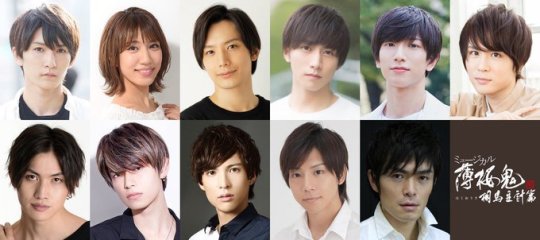
The main cast has been announced for this new story version and with interesting new faces :
Sōma Kazue: Umetsu Mizuki
Yukimura Chizuru : Matsuzaki Risa
Hijikata Toshizō : Kubota Hidetoshi
Okita Sōji : Yamazaki Shogo
Saitō Hajime : Ōumi shōichirō
Tōdō Heisuke : Higuchi yūta
Harada Sanosuke : Kawakami Shōta
Nagakura Shinpachi : Kishimoto Yūta
Yamanami Keisuke : Teruma
Yamazaki Susumu : Shīna taizō
Kondō Isami : Imata Taira (for the 10th time, the one and only)
Source
#musical hakuoki#hakumyu#Umetsu Mizuki#Matsuzaki Risa#Kubota Hidetoshi#Yamazaki Shogo#Ōumi shōichirō#Higuchi yūta#Kawakami Shōta#Kishimoto Yūta#Teruma#Shīna taizō#Imata Taira
21 notes
·
View notes
Quote
"Mucho antes de que yo naciera,..." - Ichibanboshi (Isami Kondō) (Bucchigire!)
http://freakuot.es/Iwx
0 notes